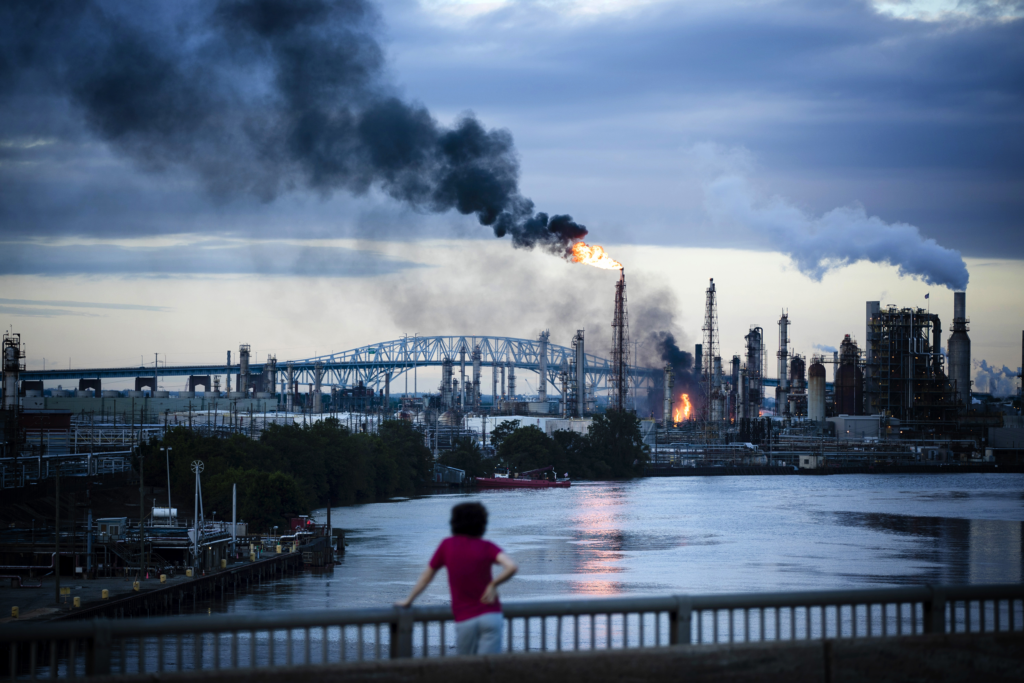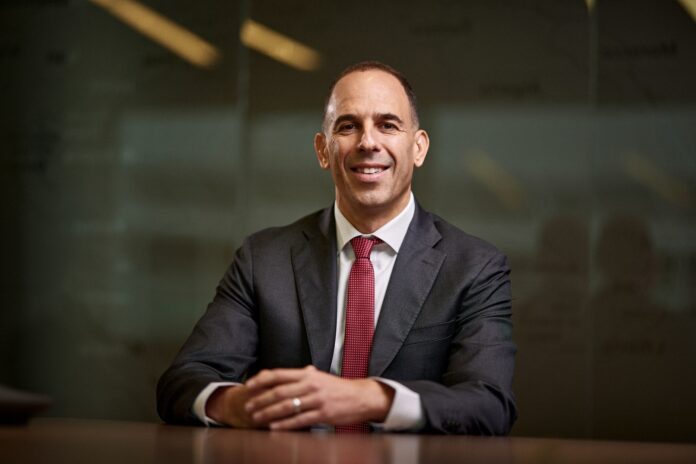Interview with Jason Pellmar, Regional Manager, Ukraine, Belarus and Moldova at International Finance Corporation (IFC) for the Interfax-Ukraine news agency and Green Deal portal
Author: Sergey Shestak
— IFC is known for its wide presence in Ukraine’s private sector. Especially in agriculture, financial sector, infrastructure, retail, etc. What is the place of the climate business in your overall business? As far as I understand, your green investments go mainly towards projects in sustainable agriculture?
Climate is a priority area for IFC and the World Bank Group, the largest multilateral provider of climate investments for developing countries. The question is not necessarily about where climate fits in, but it’s at the core of everything we do. In response to your question, agriculture is indeed one of our major focus areas. The sector has great potential to attract climate investment, which is good for business. For example, by using less water and consuming less resources, you can make more money — it’s profitable. In Ukraine, IFC has been providing advice to help the country develop climate projects with strong demonstration effect. The work is part of IFC’s Climate Smart Agriculture Finance Project, implemented in partnership with the Austrian Federal Ministry of Finance.
Now, because climate is so much more in focus (and I appreciate that Interfax-Ukraine along with other media is particularly paying attention to this issue), we are seeing more innovations. Today, the global community is looking at much more than just energy resource conservation. Some examples include technological innovations, such as agritech, precision farming, and no-till or low-till agriculture. So, we are in a new phase, exploring what climate means for all the industry sectors where IFC is engaged. A new level of attention, especially from regulators and policymakers, will further help drive innovation in various sectors.
Apart from agriculture, we work on creating a robust climate market by building the capacity of local banks, helping municipalities introduce green technologies, and working with the World Bank to help the government modernize Ukraine’s infrastructure and energy sectors. While IFC is helping boost these sectors through advisory and investment support, climate is at the core of all of IFC’s engagements in Ukraine.
— At the presentation of the IFC project «Climate Smart Agriculture Finance Project» you said that this project would help reduce greenhouse gas emissions by 2,000 tonnes by the end of 2021. This is, of course, a drop in the ocean, but how do you plan to achieve these results?
Let me refer to some of the innovations that can help develop business models to further mobilize more private sector investments. IFC has a team of financial and agri-experts, which looks holistically at the value chain in Ukraine’s agricultural sector. A wider adoption of climate-smart technologies, such as precision agriculture or better use of non-renewable resources, can reduce soil carbon loss and provide significant fuel savings that will directly reduce greenhouse-gas emissions.
Moreover, using drones can help convey a clearer sense of the lay of the land and ensure better use of fertilizers and insecticides. I am proud of the recently signed memorandum of understanding between IFC and the Ministry of Agrarian Policy and Food of Ukraine whereby IFC is taking the lead with the ministry to put in place a framework to mobilize private sector investment into irrigation. Due to years of underinvestment and degradation of the water supply system, Ukraine’s irrigation infrastructure currently operates at just one-quarter of its potential capacity.
The goal of the initiative is to work with Ukraine’s government and financial institutions to help provide access to cost-effective green financing and to look at the sector holistically. We will develop viable business models to mobilize more private sector resources for the main channels followed by distribution channels and on-farm irrigation. We have already seen the kind of impact droughts can have on this sector: in 2020, the country lost nearly 400,000 hectares of winter crops due to severe droughts. According to forecasts, if this trend continues without efforts to improve Ukraine’s irrigation system, the predicted loss can be up to 40%. So, the earlier we work to address the issue the better.

— What are the possible solutions? More efficient use of resources?
Efficient use of resources is a significant part of climate-smart practices, but not the entire story. Climate change adaptation and mitigation are both equally important and time-sensitive. In order to mitigate the risks of increased drought, we need to think about weather patterns and how to better use insurance products and financial instruments that can help farmers adapt to the impacts of climate change. We believe that diversifying crops and developing an efficient irrigation system can serve as viable solutions for agricultural businesses and smaller farmers.
— In one of the interviews, you said that sustainable agriculture had an investment potential of $11 billion in Ukraine. Where does this potential come from?
According to the Carbon Trust and UkrAgroConsult forecast, implementation of climate-smart technologies would require an investment of nearly $1.7 billion and return an additional revenue of $11 billion through increased productivity and yield.
To make a point, I’ll use an analogy. In the context of the pandemic, let’s hypothetically say that one was to pick the least-cost option and do nothing — not to impose social distancing measures, not to roll out vaccination campaigns, not to ensure access to personal protection equipment, and so on. However, in doing so, the all-in cost of inaction would be greater than taking difficult decisions today. No one likes to shut down the economy, but I guess governments decided to take this step across the world because the cost of doing nothing was much more compared to the harsh measures that were put in place. That’s exactly how it is for climate. While $1.7 billion is a lot of money, the returns far exceed the cost.
— IFC is helping the National Bank of Ukraine (NBU) develop a road map for green finance, which is expected to be presented at the end of October. Why does the Ukrainian financial system need it?
I am very proud of this IFC initiative. The NBU was one of the pioneers in adopting appropriate standards and policies to build a sustainable financial sector by promoting good climate practices. Central banks can play a key role in creating an enabling environment for green investments across sectors. That is why IFC, in partnership with the Austrian Federal Ministry of Finance and the Swiss State Secretariat for Economic Affairs SECO, launched our engagement with the National Bank of Ukraine.
In addition to focusing on green financing, our engagement with the NBU aims to promote good environmental, social, and governance (ESG) practices. To explain, better capability of the regulator to ensure proper disclosure of ESG requirements will create an incentive for commercial banks to improve their transparency and disclosure practices and also give additional incentive for more green lending. IFC’s plan is to help the NBU develop a policy roadmap to introduce sustainable finance and ESG standards, enabling Ukrainian banks to operate more sustainably and improve access to capital, stimulating more green lending in the economy.
— Many environmental organizations say that over the last five years, just after the signing of the Paris Agreement, 60 world’s largest banks have increased lending to the coal and oil/gas industries by $3.8 trillion — three times more than total bonds and loans backing green projects. How do you assess this situation?
I think it’s kind of a carrot-and-stick situation. We talk about the role of the national banks and putting in place a conducive framework to promote more investment. But then, what’s in it for businesses or the consumer? It is becoming more obvious there is less need for a stick (regulator) because businesses are now very clear about the fact that climate action can yield direct economic gain. I strongly believe we are past the phase where climate action was about public relations and corporate social responsibility.
An increasing number of commercial banks and major regional and global corporations are recognizing “climate” as a critical aspect of their businesses to inspire trust among the broader stakeholder community, including consumers who are the major stakeholder in this whole climate agenda. In fact, they have never been more mindful of which banks they put their money in, which airlines they fly, and where they source their food from. Also, we are observing a convergence of interests among other stakeholders.

I don’t want to oversimplify the situation — it is complex and certain nudges are still required, especially by governments, regulators, and policymakers. For developing countries with sizeable greenhouse-gas emissions, the cost of transitioning to lower-carbon economies is large compared to their annual investment budgets.
As an example, around EUR10 billion per year until 2030 are needed across sectors — from energy to urban transport solutions and beyond — to meet Ukraine’s climate action targets. In addition to financial hurdles, many emerging countries are still working on the long-standing structural reforms and legal arrangements to translate Paris Agreement commitments into viable and bankable pipeline of investments with risk-adjusted returns.
Governments have a very important role to play in modifying the incentives in the tax and subsidy structures — we still see fossil fuel subsidies in many regions — and in introducing financial penalties such as carbon taxes. Also, policymakers and regulators can establish and implement standards and address market barriers to stimulate more climate investment.
— What could be other major drivers from the policy perspective if we talk about Ukraine?
Ukraine has recently updated its nationally determined contribution under the Paris Agreement and committed to reducing greenhouse-gas emissions by 65% of its 1990 levels by 2030. However, what is more important and ambitious is Ukraine’s commitment to integrate with the European Green Deal and to pursue a net-zero emission policy by 2060, which will require massive investment.
— Where will Ukraine find this investment?
At IFC, we strongly believe the private sector can play a leading role in meeting these commitments. The public sector, too, has a key role to play. The government, with the help of donors and international partners, needs to make certain investments, which are non-commercial. However, the overwhelming majority of the investment required will need to come from the private sector. That’s where IFC’s expertise and experience lie. With that in mind, we continue to work with the private sector to boost sustainable finance and promote greener technologies while reducing environmental footprint.
— Great Britain will soon host COP-26, a landmark conference on climate. Why it is so important and why a lot of nations are getting ready for it?
With high-level attendance, international summits usually draw a lot of attention. The UN Climate Change Conference will offer a platform for leaders of sovereign nations to join forces with civil society, companies, and people on the frontline of climate change to accelerate action at home and abroad to meet the Paris Agreement goals.
Countries across the world are thinking carefully about the commitments they want to make at this summit. These commitments will be tracked by the international community as well as the media. On a world stage such as COP-26, no country wants to be perceived as being “not ambitious enough.” Further, with global stakeholders keeping nations accountable, I am optimistic that there will be some strong messages in the next few weeks. This will also allow organizations like IFC and other international financial institutions to come up with action plans to support our government partners. COP-26 will set the tone and agenda which will in turn prompt an action plan on how to cut greenhouse gas emissions and achieve climate targets.

